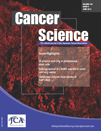Sci Transl Med:超灵敏稀有细胞检测技术
2012-07-10 songbo 生物谷
7月4日,Sci Transl Med杂志报道了一项高灵敏的新型全血内稀有细胞检测技术,具有广泛的临床应用前景。 检测稀有细胞(<100个细胞/毫升全血),并对单细胞特异性标志物进行定量测量的能力在基础生物医学研究中日益重要。然而,细胞密度低,样本量小,以及需要对样品进行必要的净化等限制因素阻碍了这种方法在临床的广泛使用。为了克服这些挑战,研究者制定了一个以微量流体芯片为基础的微型霍尔探测
7月4日,Sci Transl Med杂志报道了一项高灵敏的新型全血内稀有细胞检测技术,具有广泛的临床应用前景。
检测稀有细胞(<100个细胞/毫升全血),并对单细胞特异性标志物进行定量测量的能力在基础生物医学研究中日益重要。然而,细胞密度低,样本量小,以及需要对样品进行必要的净化等限制因素阻碍了这种方法在临床的广泛使用。为了克服这些挑战,研究者制定了一个以微量流体芯片为基础的微型霍尔探测器(μHD),它可以在全血中直接测量单个的,免疫磁性标记细胞。 μHD甚至可以在广大的血细胞和未结合反应物存在下,检测单个细胞,而不需要任何清洗或纯化步骤。
此外,用于μHD的半导体技术具有高灵敏度和测量的广谱性。这使它可以进行高通量的筛选(目前约1千万个细胞/分钟)。对20个卵巢癌患者全血使用μHD芯片检测循环肿瘤细胞证明,该方法的灵敏度远高于目前临床标准的要求。
并且,运用具有独特的磁化特性和生物正交化学特性的磁性纳米粒子,还使μHD可同时检测生物标志性上皮细胞粘附分子(EpCAM),人表皮生长因子受体2(HER2 )/neu,单个细胞的表皮生长因子受体(EGFR)。这项经济实惠的单细胞分析技术非常适合在临床实践中进行稀有细胞的分子和细胞诊断。

doi:10.1016/j.cell.2011.10.017
PMC:
PMID:
Ultrasensitive Clinical Enumeration of Rare Cells ex Vivo Using a Micro-Hall Detector
David Issadore1, Jaehoon Chung1,*,Huilin Shao1,*,Monty Liong1,
Arezou A. Ghazani1,Cesar M. Castro1,2,Ralph Weissleder1,3,? and
Hakho Lee
The ability to detect rare cells (<100 cells/ml whole blood) and obtain quantitative measurements of specific biomarkers on single cells is increasingly important in basic biomedical research. Implementing such methodology for widespread use in the clinic, however, has been hampered by low cell density, small sample sizes, and requisite sample purification. To overcome these challenges, we have developed a microfluidic chip–based micro-Hall detector (μHD), which can directly measure single, immunomagnetically tagged cells in whole blood. The μHD can detect single cells even in the presence of vast numbers of blood cells and unbound reactants, and does not require any washing or purification steps. In addition, the high bandwidth and sensitivity of the semiconductor technology used in the μHD enables high-throughput screening (currently ~107 cells/min). The clinical use of the μHD chip was demonstrated by detecting circulating tumor cells in whole blood of 20 ovarian cancer patients at higher sensitivity than currently possible with clinical standards. Furthermore, the use of a panel of magnetic nanoparticles, distinguished with unique magnetization properties and bio-orthogonal chemistry, allowed simultaneous detection of the biomarkers epithelial cell adhesion molecule (EpCAM), human epidermal growth factor receptor 2 (HER2)/neu, and epidermal growth factor receptor (EGFR) on individual cells. This cost-effective, single-cell analytical technique is well suited to perform molecular and cellular diagnosis of rare cells in the clinic.
本网站所有内容来源注明为“梅斯医学”或“MedSci原创”的文字、图片和音视频资料,版权均属于梅斯医学所有。非经授权,任何媒体、网站或个人不得转载,授权转载时须注明来源为“梅斯医学”。其它来源的文章系转载文章,或“梅斯号”自媒体发布的文章,仅系出于传递更多信息之目的,本站仅负责审核内容合规,其内容不代表本站立场,本站不负责内容的准确性和版权。如果存在侵权、或不希望被转载的媒体或个人可与我们联系,我们将立即进行删除处理。
在此留言














#检测技术#
75
#Transl#
60
#TRA#
68
#Med#
67